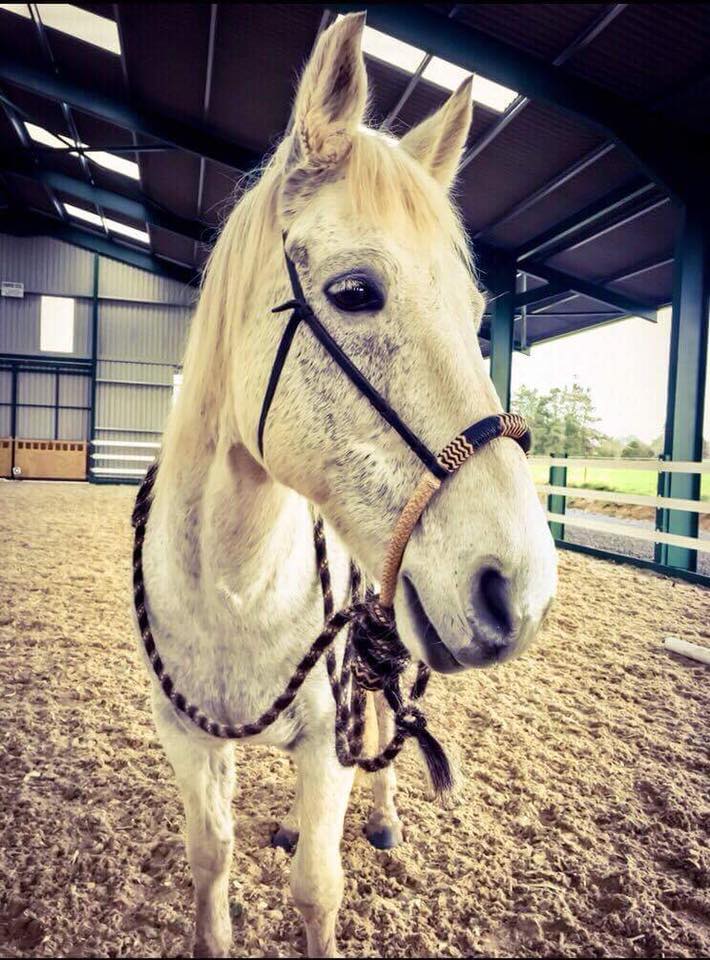Which bitless bridle is best for your horse?

After my first job, I went backpacking to Australia & New Zealand. I was looking for a job there while I travelled around, so I applied to lots of horse treks in Australia & New Zealand.
One horse treks, called Mt. Lyford Horse Treks in New Zealand, two hour north of Canterbury emailed me back, with a woofing offer. They needed a trail guide for their business bringing tourists on horseback around the Southern Alps. I would work a few hours every day in exchange for room and board. It sounded perfect!
I booked a flight from Brisbane and arrived over two days later. At this stage in my life, I loved horses still, but some bad experiences when I was a teenager and trying to pass horse exams, had made me believe that advanced riding, lateral work and collection was only possible if you sacrificed your horse’s health by physically making them adopt certain postures and using heavy handed tactics to perform lateral work. None of that sat right with me, so I gave up my dreams of having a happy, healthy, advanced collected horse.
The first thing that astonished me in New Zealand, was among all the horses they had there (who were beautifully cared for, and lived together in what I can only describe as paradise on the south island), were ridden in rope halters.
I had never seen a rope halter in my life!
And I had certainly never considered using a rope halter, with no bit, for tourists many of whom had never ridden before, while exploring the southern alps.
The whole thing did not sound like a good idea to me.
How wrong I was!
Over the 3 months I was there, all the tourists were safe and happy. All the horses were happy and healthy. And it was one of the most wonderful places to work in the world.
But one day, something really astonished me.
My friend and the lead trail guide at this horse treks, was riding her chestnut horse in a rope halter. But she was only using one rein.
That blew my mind.
And what she was doing was remarkable. She was cantering her horse, backback, in a rope halter with one rein, and her horse was totally relaxed and collected.
My previously held beliefs that collection was only something that could be achieved with force and pressure were completely shattered.
Not only could they be achieved in a kind way, but you didn’t need a saddle, you didn’t need a bit and if you wanted to, you only needed one rein!
It was like my whole world shifted 10 degrees, and a new path to incredible horsemanship, that was kind to the horse, without using any force or gadgets, was laid out in front of me.
Eight months after I landed in Australia on my backpacking trip, I flew home with a new mission.
To restart my horsemanship education, to use kind gentle and kind ways to work with horses and to begin riding in one of these wonderful rope halters.
Soon after I bought Ozzie, my Connemara. And I decided to do both groundwork & riding in a rope halter.
Over the years since then, there are a lot more options for halters and bitless bridles of all sorts. Plus there are hackamores. I’m a bit of an equipment geek – as I want to use the one that will help me & my horse communicate easily & with the smallest of cues…
So right now I’m riding in a bosal & mecate – also known as a hackamore.
But I’ve been getting lots of Qs from our community about what would be right for them.
What is the difference between an English bitless bridle and a western bitless bridle?
Would a side pull bridle work better than a Dr. Cook bitless bridle? What about an english hackamore, micklem, westen bosal or california hackamore? Which would be the best bitless bridle option for your horse?
Grab the free bitless bridle guide.
So I’ve put together a bitless bridle guide that you can download for free. It goes through all the main halter & bitless bridle & hackamore types, and should help you narrow down which option would work best for you & your horse.
Grab a copy at www.bitlessbridleguide.com





